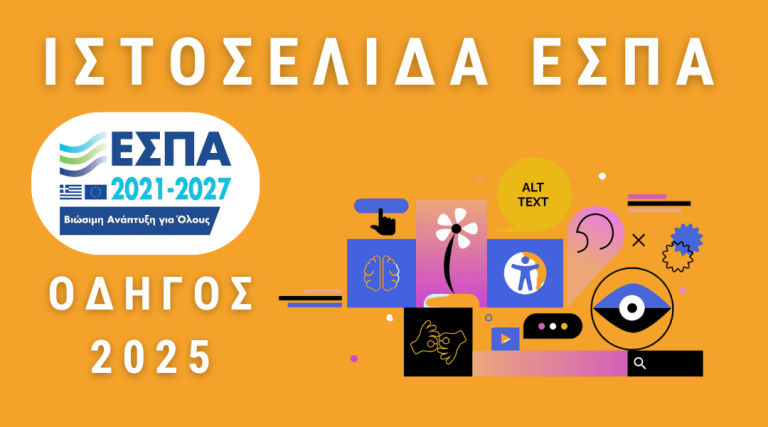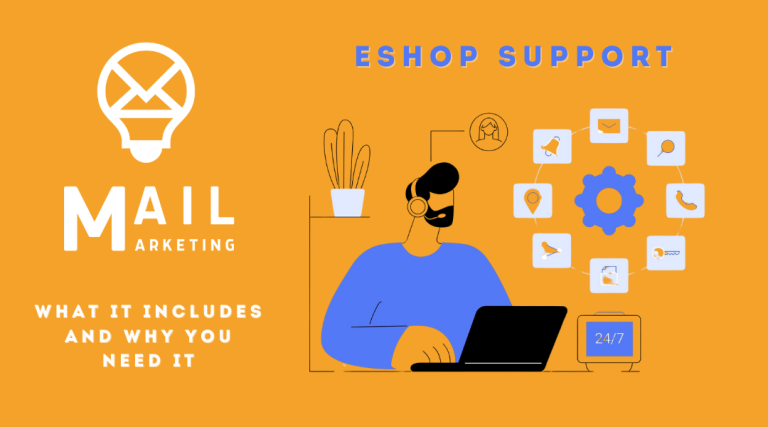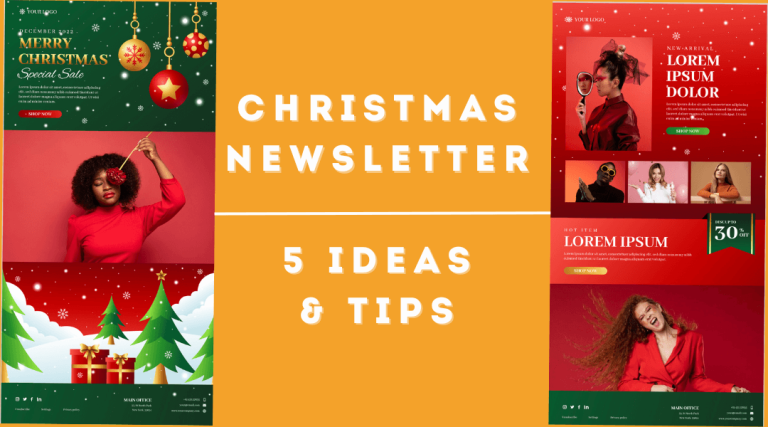How to design the perfect newsletter (5/8)
Section 5 - The Ideal Newsletter
Knowing and understanding the anatomy of an email is essential to enhance the deliverability of your newsletter. It also plays a key role in helping you capture your subscribers' attention and encourage them to continuously interact with your messages. So let's see:
- The key elements of an effective, impactful newsletter.
- How each element affects deliverability.
- The "musts" for creating a great email
The anatomy of a Newsletter
Knowing and understanding the different parts of an email is imperative to improve the deliverability of your messages. So let's talk about them from two perspectives:
- The information your subscribers see when they open their email and see your message.
- The design elements of your email and the code on the back, which determine what your subscriber sees.
On the part of the subscriber, the email shows:
- Headings: This includes From, To, Date, Subject and other information that is usually hidden from the public reader, but can be accessed in different ways depending on the email client used by the recipient.
- Preheader or preview text: This will appear below the subject line and provide a text snippet of what the email is about. These details usually don't get as much attention as the subject line, but they are important and can make the difference between a subscriber opening an email or not. Usually the header will be something that will grab attention with a few words, while the preheader can provide more information to convince the recipient to open it.
- The body of the email message: Includes the content (or text) and the footer. This is where most of your creative copywriting, branding and design appears. This part of the email will also display any images and contain links that enhance your creative.
Inside the body of the email, you will see the footer. This section is very important and must be in place for compliance purposes - otherwise shippers may face large fines. A footer should always include the information required in the GDPR data protection law. E.g. necessarily there should be a link to unsubscribe the recipient from future communications. Don't worry. Serious email platforms will not let you send any message unless you include the unsubscribe link. But let's take a detailed look at everything you will need to include in the footer of the message
- A valid postal address
- The full name of the company sending the email
- An unsubscribe link with instructions on how to unsubscribe the subscriber from your email list
- One contact email and...
- Legal terminology with links to terms of service, privacy policies and other disclaimers.
The creative side of a Newsletter
Now let's take a look at email design from a creative and code perspective.
The code makes it possible to design and will allow your email to display correctly on different platforms, such as web-based email clients or desktop and mobile apps.
Your email password will include the email header, where you set information that allows you to configure the style and interaction of the message. The header contains all the necessary meta tags that instruct the email program what to do if certain conditions are met. It also contains CSS or style information, such as the color of the text, specifies the size of certain images, and contains tags that inform the client of the type of document to be rendered (in this case, HTML).
The body of your email password contains all the elements and their attributes that will appear in the email, as well as any code that will control the interactivity on those elements. It may also contain any reader action tracking data you add as part of data collection or newsletter campaign performance tracking.
Again, all popular newsletter sending platforms offer a built-in email editor where you can select and drag various elements into the newsletter, such as texts, images, dynamic product blocks, etc. So clearly you don't need to know any code. Just the basics of a proper design.
The deliverability of a Newsletter
Now that we have created the parts of an email, Let's discuss how these elements affect the tradition.
There are a few important things to consider when trying to design a successful email. First, and arguably the most important thing, is understand your subscribers. Even simple demographic information can determine the design and delivery of your email messages.
Then comes the branding. Your recipients should know who the email is from without even reading it. Branding elements include colors, images, logos and more that allow the reader to visually identify which company is sending the email with minimal effort.
An effective call to action (CTA) button will ensure the effectiveness of the newsletter, which helps deliverability overall. This is because the difference between a recipient who simply opens the email and one who clicks (because they were told to with the incentive button) is chaotic in the eyes of ESPs.
All these factors occur at the creative level as well as at the coding level.
The "musts" of a Newsletter
Now let's look at the "dos" for creating a great email template:
Use a attractive subject line which is short and to the point. Subject lines can be very long, but there is limited space in the subject line element of each specific email client. Some email clients may truncate your subject line to a different character length than others. Therefore, it is important to test to see how your message appears to different customers. And target a short length, while at the same time conveying the message will be the best you can do.
Make sure you have added a header text or a preview text. This helps the recipient get a quick look at the content of the email without opening it and gives you an extra opportunity to grab their attention.
Personalise your email. Add dynamic fields in your templates where your subscribers' information, such as names, will be added. Of course, it would be good to make sure this works properly, especially for male Greek names. Including these details in the subject line or body of the email is usually an effective way to increase your newsletter open rate.
Use a email design test tool. For example, in Litmus you can see how your email will appear in most common email clients. You may find that your email template doesn't work or look good in some programs and you may need to reconsider how your template is designed. Some email programs require a specific alternative code that helps your email display correctly.
Apply the accessibility guidelines. Around one in four people now live with some form of disability. This includes audiovisual challenges and conditions such as dyslexia, colour blindness and astigmatism that make it harder to understand written content. Failure to include these users means less engaged audiences and lost revenue opportunities. Fix it by using prominent color contrast for your design, make sure fonts are rendered at the correct size in both web and mobile programs, and add alternative text on each image in your email template.
Optimize the space at the top of your email. This is usually around 600 px from the top of your email. This should display your main message and your CTA.
Add an unsubscribe button at the end of your email as mentioned above. If a subscriber does not want to receive your email, make it easy to unsubscribe. The alternative is that they could be annoyed by your emails and mark them as junk, which will hurt your deliverability.
Adjustment for dark mode. Customize the email style and always check how images, logos, etc. will look in dark or normal mode.
Try interactive content. AMP, or Accelerated Mobile Pages, is a newer framework designed by Google to add interactivity to emails. AMP for email is not supported by all email clients, but if you know that your audience primarily uses Gmail, this could be a great addition to your marketing tool set. Use it to display dynamic content, images and carousels, or use it to send registration or survey forms that customers can open without having to leave the email.
As you can see, there is a lot to do and learn to create the most engaging email messages. So get started and get creative!
In the next section you will see how to properly track conversions in email marketing.



